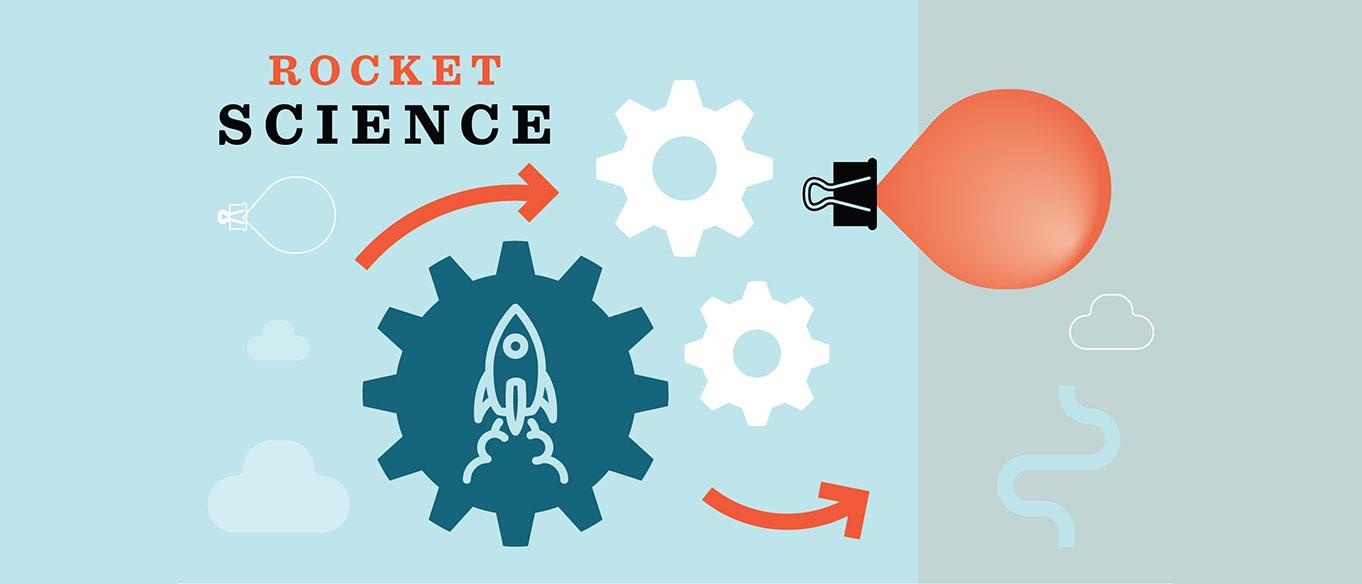
Have you ever wondered how rockets carry their payload? In this activity, you'll use a balloon and some string to explore the physics of rockets, and then engineer a cargo basket to safely deliver the rocket’s payload to its destination!
Age: 6+
Time: 20 - 40 minutes
Topics: rocket, flight, engineering
What you need:
- Balloons
- String or fishing line, 6-10 feet long
- Drinking straws
- Tape
- Binder clips or paper clips
- Materials for building a cargo basket, such as:
- Straws
- Craft sticks
- Cardboard from cereal or tissue boxes
- Small paper cups
- Pipe cleaners
- Cargo, such as:
- Coins, washers, or paper clips
- Small plastic animals or figurines
- Paper and pencils, crayons, or markers
What to do:
1. To build your balloon rocket, start by blowing up a balloon, but don’t tie the end. Instead, pinch it closed with a binder clip or paper clip.
2. Tape the straw to the balloon lengthwise, so one end points toward the top of the balloon and the other points toward the pinched-off end. Then, thread the string or fishing line through the straw. You might need another person to help with holding everything at once.
3. Tie the ends of the string to two sturdy objects (like chairs or doorknobs) so the string is stretched tight between them, with the balloon hanging from it.
4. To launch the balloon rocket, slide the balloon to the end of the string nearest the pinched-off balloon end. Release the clip on the end of the balloon. What happens?
5. Do some research on your rocket’s flight by launching it a few more times. Make careful observations about how the rocket moves. Questions to think about:
- Does the rocket move smoothly? Does it wiggle side to side or spin in a spiral?
- How far along the string does the rocket travel?
- What happens if you put more or less air in the balloon?
- What else might change how the rocket moves?
6. Now you are ready to engineer a cargo basket for your rocket. Think about everything your cargo basket will need to have or do. You might want to draw a picture or write a list. For example:
- Be big enough for the cargo
- Have a way to get the cargo in and out
- Carry the cargo all the way across the string without falling out
- Keep the cargo safe if the rocket wiggles or spins
- Not be too big or heavy for the rocket to carry
7. Use the materials you collected to start designing and building your cargo basket. Think or talk about these questions while you work:
- What different parts does your cargo basket need to have?
- Which material do you think will work best for each part? Why?
- Where on the rocket should the basket be attached? How will you attach it?
8. Test your rocket and cargo basket frequently while you work. If it doesn’t work quite the way you planned, keep trying! If it does work, think about what you could change to make it even better. Engineering is all about testing and improving your designs!
9. Other ideas to try:
- Add more cargo to your basket. How much cargo can your rocket carry and still make it all the way across the string?
- Redesign your cargo basket for a different kind of cargo. What do you have to change to carry bigger, heavier, or differently shaped cargo?
- Redesign your rocket to carry heavier cargo. What could you change about the rocket itself to make it more powerful? Test your ideas and find out!
What’s happening?
Aerospace engineers design aircraft and spacecraft like rockets, airplanes, and space shuttles. These machines need to fly, but they also often need to safely deliver a payload, or cargo like materials or people. To create a new rocket or aircraft component, aerospace engineers use the engineering design process:
- Research – Find out what other people have already made or discovered related to the item.
- Gather requirements – List all the things the new item needs to have, be, or do in order to work correctly.
- Brainstorm and plan – think of lots of different design ideas and then choose the best one.
- Build and test – make a first version of the item and test it.
- Redesign and retest – keep changing, testing, and improving the design until it meets all the requirements as well as it possibly can.

